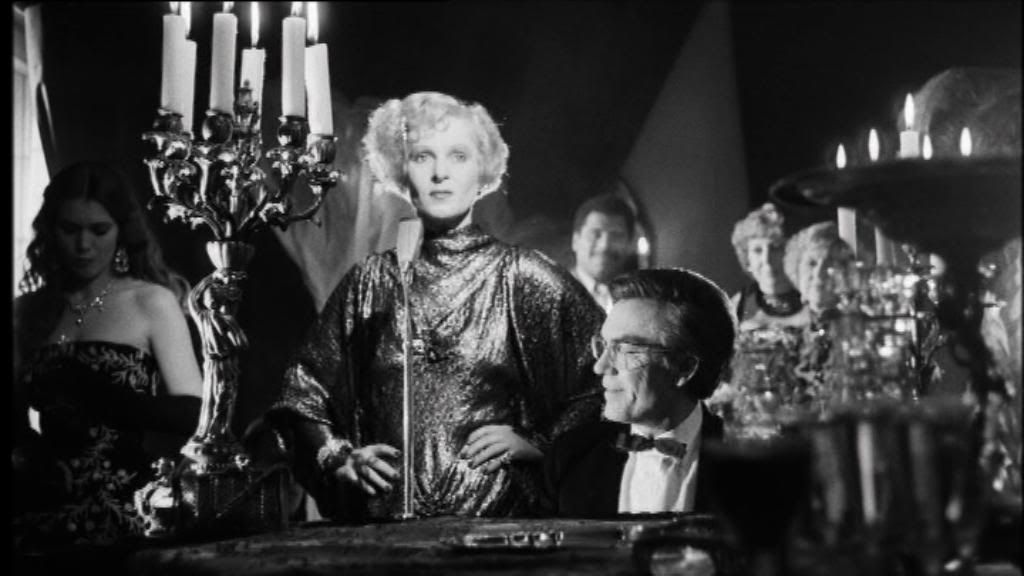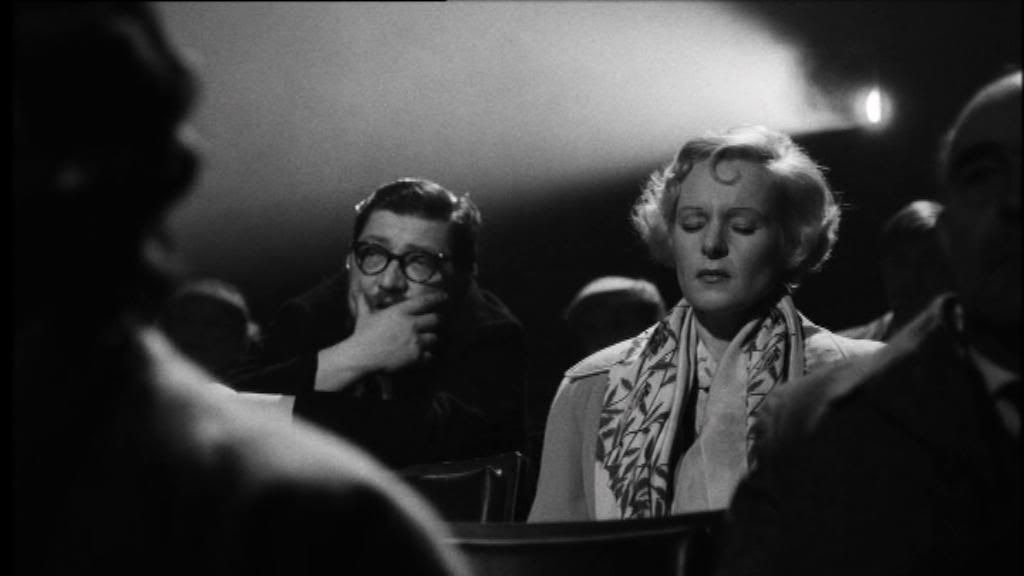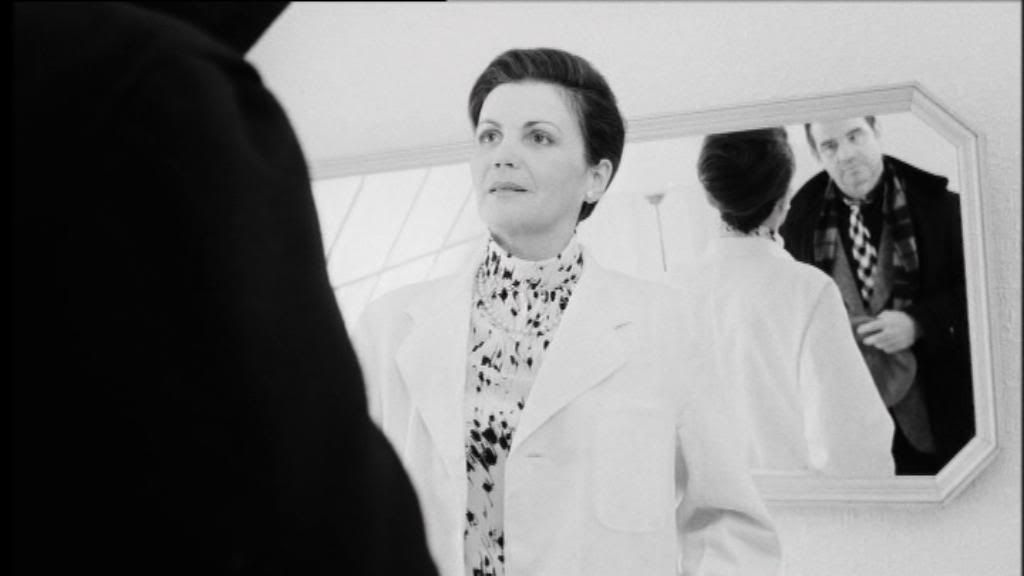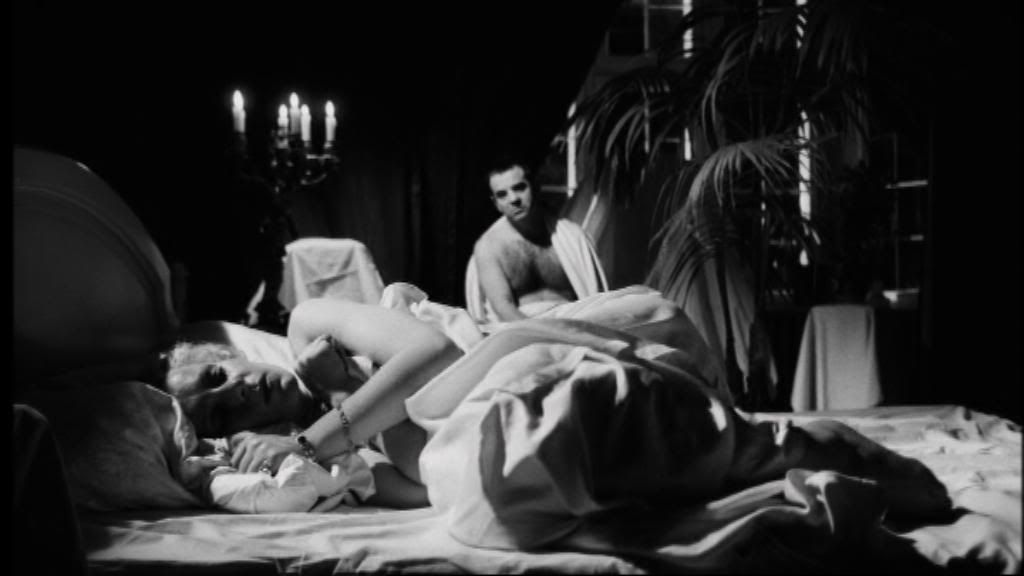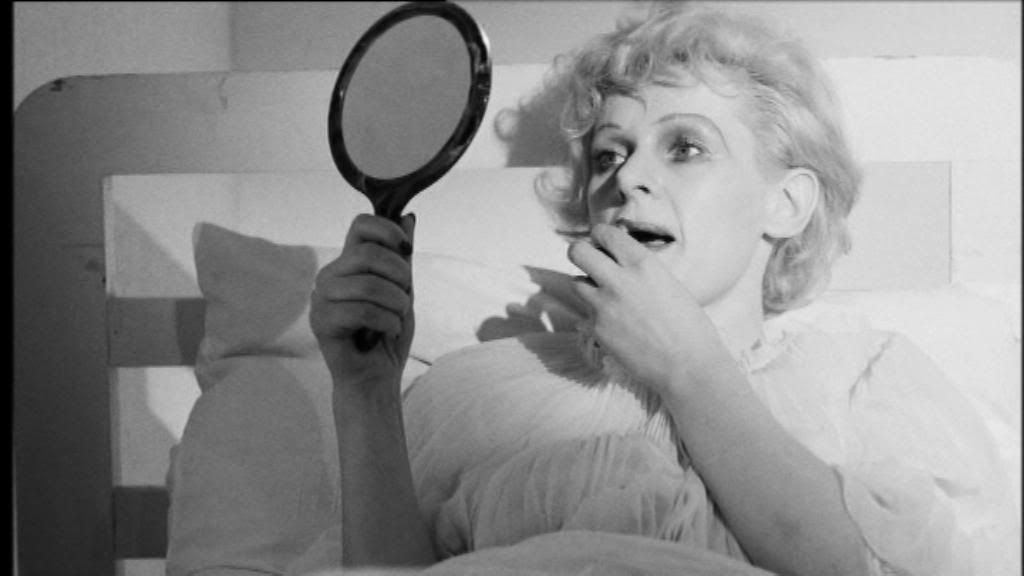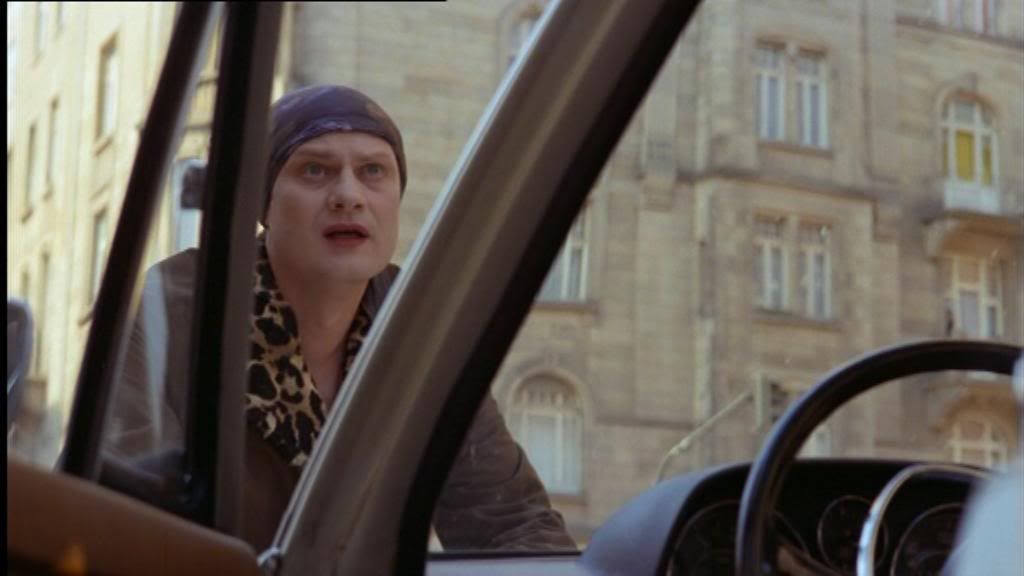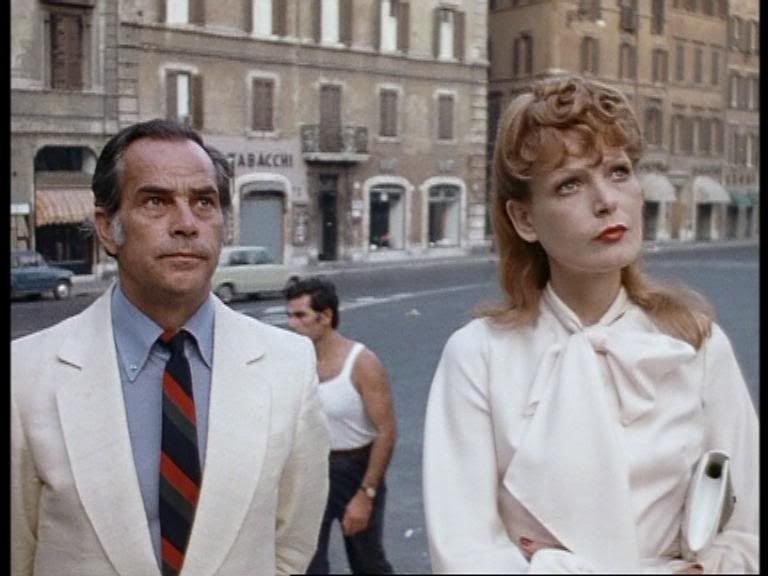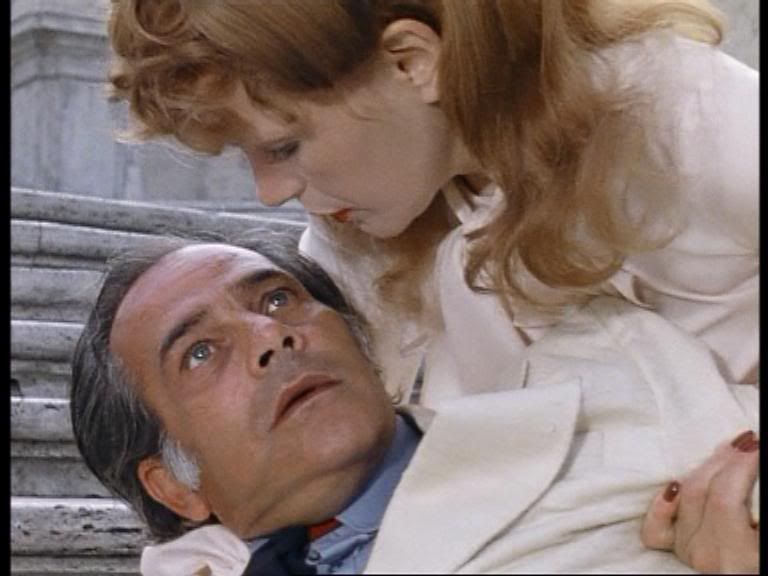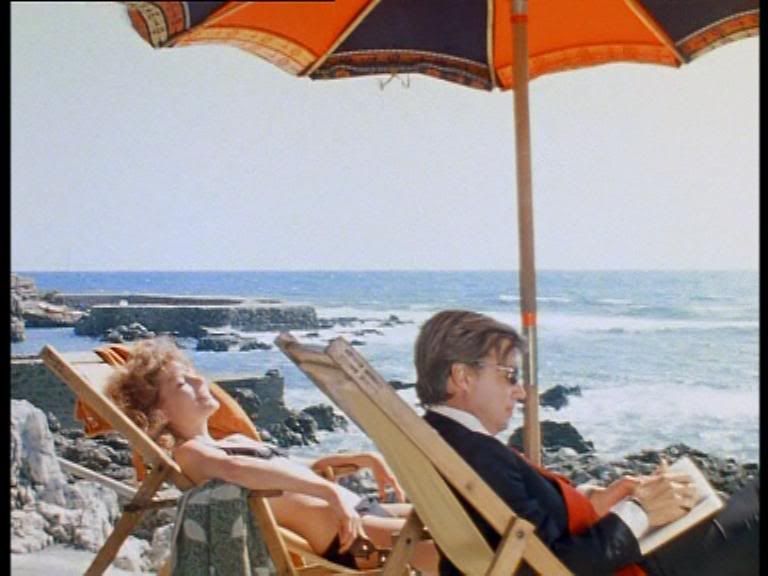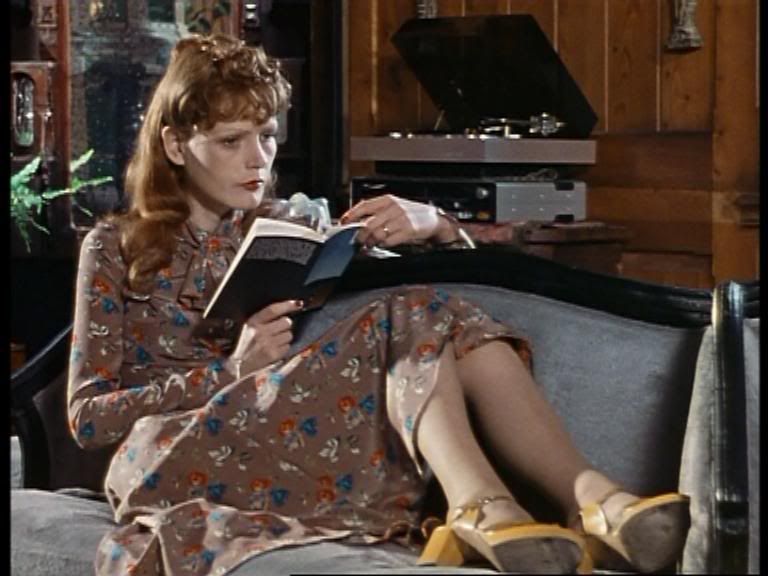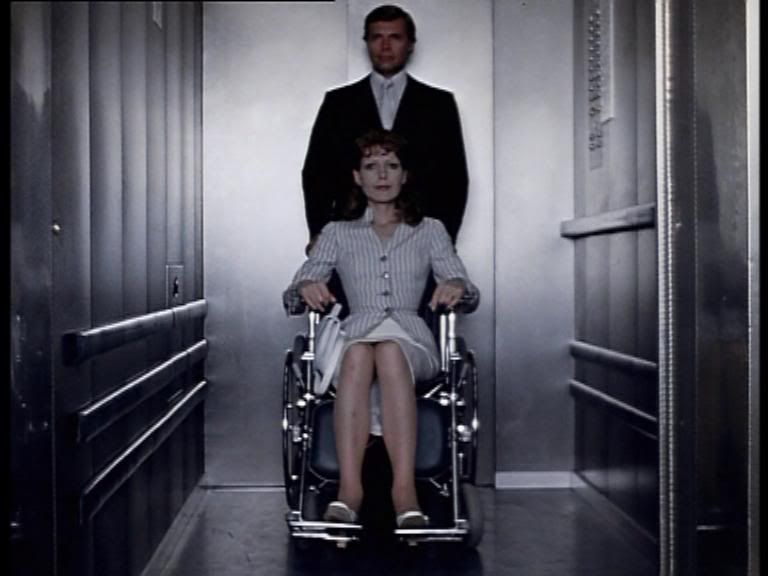During the opening credits of what must be one of Fassbinder’s most brutal yet poignant films, we are told that - “Every seventh year is a moon year. People whose lives are strongly influenced by their emotions suffer more intensely from depression in these years. To a lesser degree, this is also true of years with 13 new moons. When a moon year also has 13 new moons, inescapable tragedies may occur. In the 20th century, this dangerous constellation occurs six times. One of these is 1978.” – and whilst this is all being relayed, we are also being introduced to our ill-fated heroine, Elvira (formerly Erwin – played brilliantly by Volker Spengler), who is out cruising leather clones in a riverside park in the half light of the early morning. Money exchanges hands and, as her chosen man unpicks Elvira’s biker drag, he realises that she’s missing the necessary tackle and throws a wobbler, calling over his colleagues who then partially strip her and give her a good kicking, vicious and angry blows being repeatedly directed into her modified crotch. She then crawls away, across a railway line and through some bushes, like a wounded animal, and our first impressions of Elvira as being one of society’s outsiders and as someone whose difference will lead to her eventual downfall are being formed, as we prepare to watch the crash course which will be the last five days of her life.
Fresh from her assault, Elvira returns home to her flat and, thinking she’s alone, she slumps behind the front door, only to then hear the toilet flush and her ex-lover, Christoph, emerge from the bathroom. Within seconds an argument ensues in which the first details begin to emerge about this mysterious character we have been watching for the last five minutes or so. Elvira tells Christof that she has been dressing in men’s clothing again recently and he accuses her of being drunk and hysterical. Then, when Elvira replies that she is simply lonely, continuing to state that “the only thing I did wrong was to yearn for someone to caress me and kiss me,” Christof strikes her, strips her down to her underwear and drags her to the bathroom mirror where he truly begins to vent his spleen. “Look at yourself!” he demands. “Do you see now why I don’t come home anymore? You drink and get fatter and fatter till your face revolts me like a contagious disease, like leprosy.” He then packs his bags to leave for a final time, telling Elvira that she’s superfluous to life, has no brain and that “it smells of putrefaction” when she’s around. Her attempts to make him stay are futile, even when she reminds him that she helped him to rebuild his self-respect when he was at rock bottom. He’s straight out of the door, anyway, Elvira, in a state of déshabillé, hot in pursuit. Moments later, as she sprawls across the bonnet of his car and ends up in a heap in the road, we then meet Red Zora, who is a prostitute and who just happened to be seeing off a regular client as Elvira’s drama spilled out into the street. She runs to her rescue and becomes her companion for much of what remains of Elvira’s life, as together they visit people and places which have been significant to her and through which Elvira attempts to make sense of her troubled past.
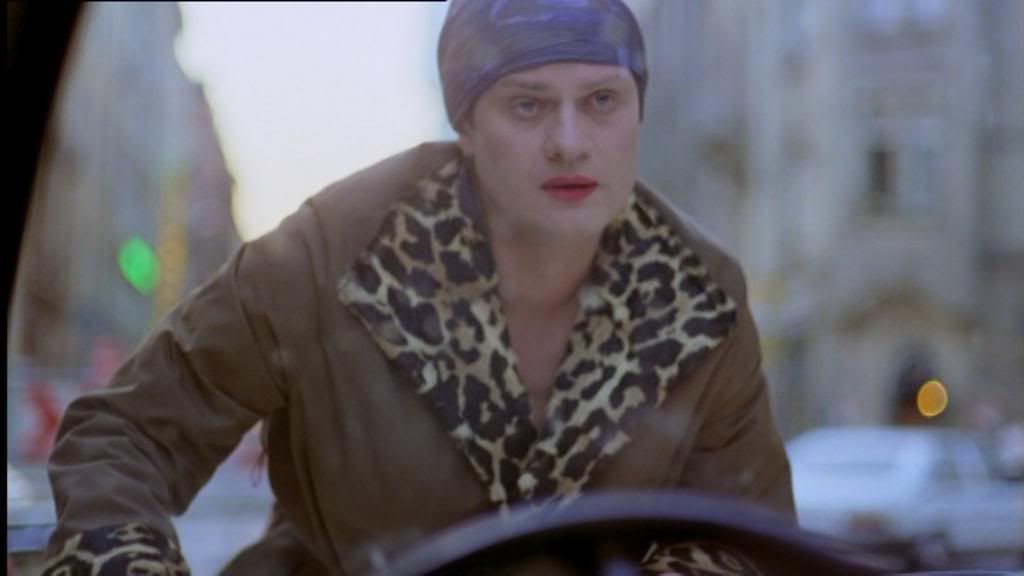
Their first port of call is the slaughterhouse where Elvira was once employed and where she has recently reapplied for work, only to have been laughed out the door now that she is a woman. Before their arrival, Zora has questioned this line of employment, saying that she feels that it is “acting against life”. However, Elvira replies, “No, it’s not. It’s life itself, the streaming blood and death. That’s what gives an animal’s life meaning.” A tone is being set. Then, as they weave through one bleeding cadaver after another and, as we witness blood and innards spilling out in this most grotesque scene, Elvira begins to tell her story of how she married a butcher’s daughter, got divorced and then lived with Christof, an actor whose career had been a failure. As the story is calmly told over images of slashed open, dead and dying cattle, the comparison with Elvira’s own inner turmoil is only too clear.
Next, they go to a games arcade where the incessant, jarring sounds and flashing lights create an atmosphere of hellish chaos which, again, is reflective of Elvira’s spiralling maelstrom of a life. In a gorgeously tragic moment, she sinks despairingly against a wall whilst Roxy Music’s “Song for Europe” grows in volume and intensity in the background. What was already a brilliant song takes on a new dimension in this context.
Zora then takes Elvira to see her friend, Seelenfrieda (a name which suggests a soul in peace) for help. He lives in a darkened apartment and seems to have relinquished any contact with the outside world. Over a soundtrack of Suicide’s “Frankie Teardrop”, Alan Vega’s “Heart of Darkness” screams wonderfully complementing the horror which is Elvira’s life, he relates a dream he had in which he’d seen gravestones in a cemetery, the inscriptions on which suggested that those buried beneath them had only lived for short periods of time, years, weeks or even days. When he had asked a nearby gardener why this was the case, he had learnt that this, in fact, represented not their entire lives but the portion of which they lived them with a true friend by their side. His contribution, of course, does not lighten the mood.

As Elvira’s story further unfolds, we find out that she was brought up in a convent and she and Zora pay a visit to find out what truly happened. It transpires that Erwin was a loveable, quiet little boy who was popular with all of the nuns and who also caught the eye of a young couple wishing to adopt. After spending time with them and visiting their home, they began to formalise proceedings, only to find that Erwin was the illegitimate child of a married woman. Her husband had been incarcerated in a prison camp at the time of his conception. Now, back on track with her life, the woman requested that her husband never learn of the child, this in turn leading to the quashing of any adoption plan, as this would require the signatures of both the woman and her husband in order to proceed. She then continues to say that Erwin became seriously ill following this disappointment and was expected to die. However, he emerged alive but a changed character who took to stealing and now inspired hatred rather than love in his Christian keepers.
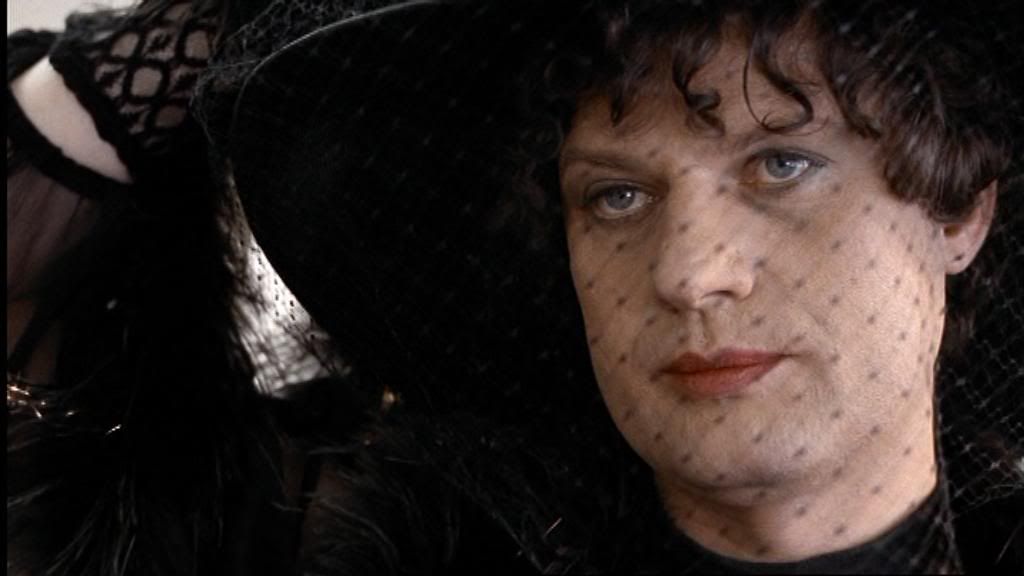
We also learn from a visit paid to Elvira by her ex-wife (Irene) that she has recently given an interview to a newspaper about her trans-gender experience and how it came about. At the slaughterhouse, Erwin had fallen in love with a work colleague called Anton Saitz who, in turn, had replied flippantly that he would have been more successful were he a woman. However, desperate for love following his childhood knock-backs, Erwin had taken this literally and immediately travelled to Casablanca for the operation, leaving behind the life he had started with his wife and daughter. As a result of the article, Irene is now concerned that Elvira will have inspired the wrath of Saitz who has since become a ruthless and highly successful businessman, firstly through owning a brothel which he ran along the lines of the concentration camp he had lived in as a child and, secondly, through a rather conscienceless line of property development where existing tenants are thrown mercilessly onto the streets. She convinces Elvira that it might be worth paying him a visit to explain and to ask for his forgiveness.
However, high up in his empty suite of offices, dressed in tennis gear and ridiculously re-enacting Jerry Lewis dance routines with his hencemen, Saitz barely remembers Elvira and, when he does, he ridicules her and laughs cruelly at her life. The interview doesn’t bother him either, so long as his name is spelt correctly with an “ai”. He does, however, return with Elvira to her flat where he meets Red Zora and the two start on some heavy petting, completely unmindful of Elvira’s presence across the hallway, chopping off her hair in the bathroom mirror. Seelenfrieda’s dream comes forcefully back into the viewer’s mind at this point, as Zora’s previous concern for Elvira’s well-being now flies out of the window at a sniff of, well, you know what. Schwanz?
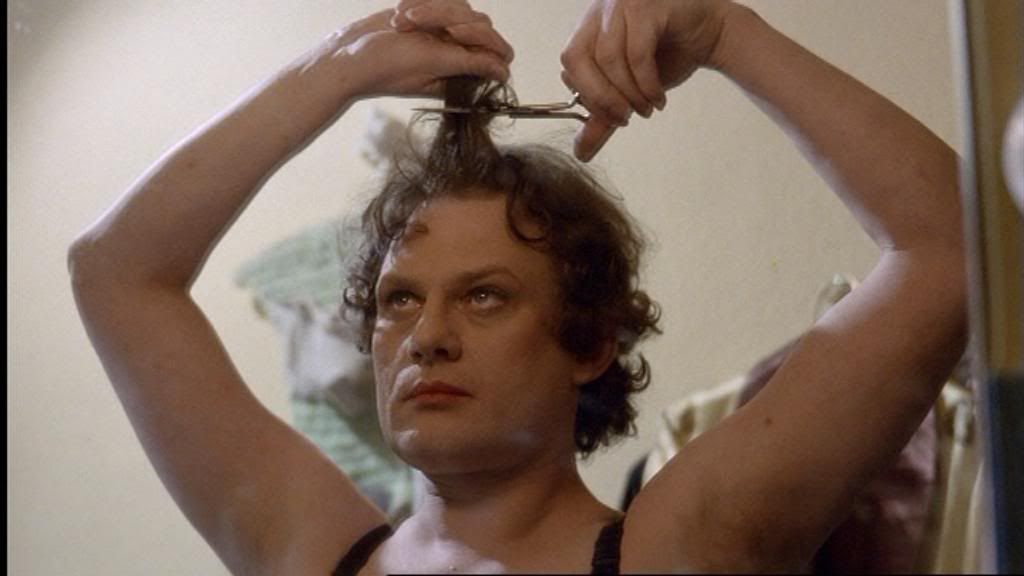
In the closing segment of the film, Elvira, now dressed in men’s clothing, pays two more visits, the first to her family who are having a meal al fresco and who seem to be the only ones who truly love her. The scene, although tender in parts, is also very strained as everyone realises it’s too late for their lives to be reconfigured, Elvira’s inability to sit at the same, already full, table as his daughter and ex-wife being a powerful symbol of their irreconcilable rift. Elvira, therefore, departs and now goes to see the journalist who recently interviewed her, in a last bid attempt at finding solace. However, upon the insistence of his wife, he sends Elvira away, saying it is too late to invite her inside their home. Despairing and friendless, Elvira now returns to her apartment. Whilst Zora and Saitz are busy together on the bedroom floor, she takes an overdose and lies down to die beside them. Meanwhile, to a soundtrack of the interview she recently gave, those who she has recently visited (her family, the journalist, the nun) become aware that a tragedy is taking place and - too late was the cry - they all arrive at the flat to find Elvira dead. A Connie Francis tune plays us out but the record gets stuck after a few bars.

Written over a period of three or four days and filmed almost immediately afterwards, in July/August 1978, for many people “In a Year of Thirteen Moons” is Fassbinder’s response to the suicide of his lover Armin Meier with whom he was becoming increasingly estranged and who had taken his own life whilst Fassbinder and his coterie were at the Cannes Film Festival in May/June of that same year. Elvira’s suicide certainly seems to bear similarity with real life occurrences. Also, in a kind of echo of Elvira’s childhood, Meier (an ex-butcher, too) had grown up parentless in an orphanage, being a product of Himmler’s Lebensborn programme, Elvira’s search for and confusion regarding her identity and her need for love, perhaps, also being reflective of uncertainties and needs he, too, must have experienced. Identity is certainly a key theme of the film, with Elvira having experienced two during her shortened life, the outcome being, though, that she was actually left as a kind of non-person who could no longer fit in anywhere: not amongst the gay men cruising in the park; nor back with her family; in a stable relationship; or returning to her old line of work for which she had the requisite training. Similarly, Anton Saitz, for all his faults, has also been shaped by his background in a concentration camp, as he protects himself from the outside world with the password “Bergen-Belsen” and then, when he is not passing on the brutality with which he was familiar from the earlier part of his own life, he is ludicrously trying to relive the childhood we presume he missed out on through enacting idiotic dance routines. Finally, as with many Fassbinder films, “In a Year of Thirteen Moons” can be read as an allegory, the characters and their individual stories serving only as metaphors for a much broader, universal truth as he, perhaps, saw it. Certainly, many of the scenes which should carry the most emotional charge are executed rather coldly, in a stylised and somewhat perfunctory fashion, heart-rending stories being related in emotionless monotones and often accompanied by highly distracting images, as though Fassbinder were trying to distance his audience from emotional engagement with the tragedy of Elvira’s individual story. He also refuses to let her be a pathetic victim, as the melodrama convention would normally dictate, as she maintains a high level of dignity throughout, even at the times of her worst humiliation. It’s been suggested, too, that by deciding to make the film in Frankfurt, the financial heart of Germany’s post-war economic miracle, Fassbinder was partly commenting on the self-interested and ruthless capitalist society which had grown out of this affluence. With very few exceptions, the characters in this film act out of self-interest when push comes to shove and much of the suffering experienced by Elvira is avoidable and comes as a direct result of the actions of those she has encountered in her life. The overall message seems to be that we’re all doomed, no matter what delusions we use to mask this inevitability. “In a Year of Thirteen Moons” is a brilliant film, even if the plot sounds a little fantastic in places, but it’s certainly not one to watch when you’re feeling a little out of sorts with yourself. Leave it to happier days.
